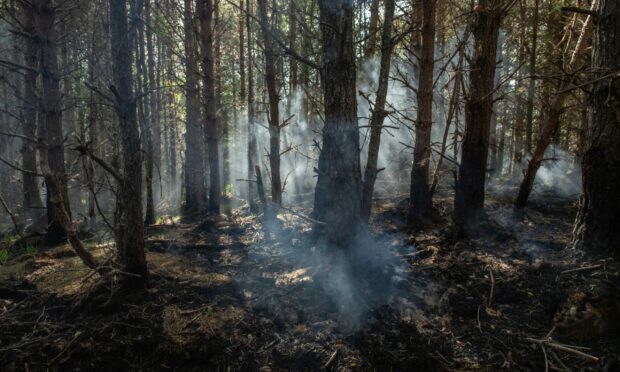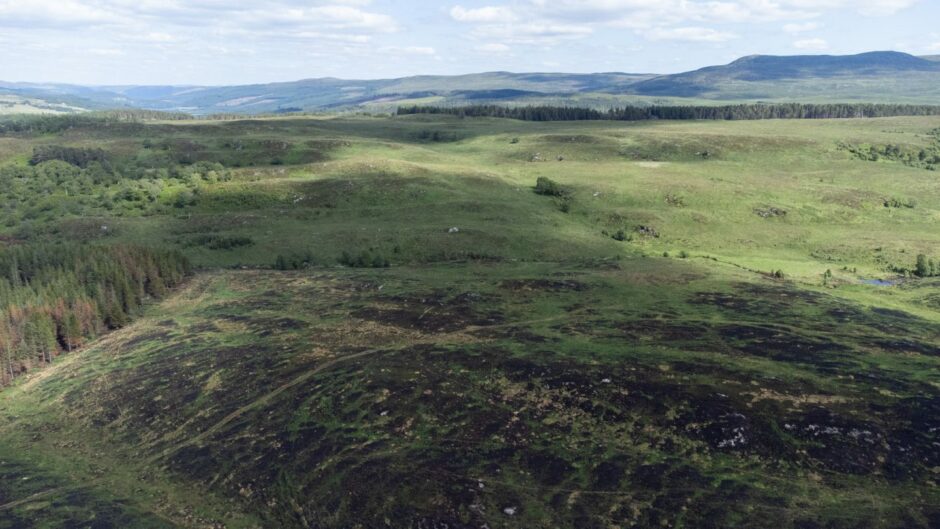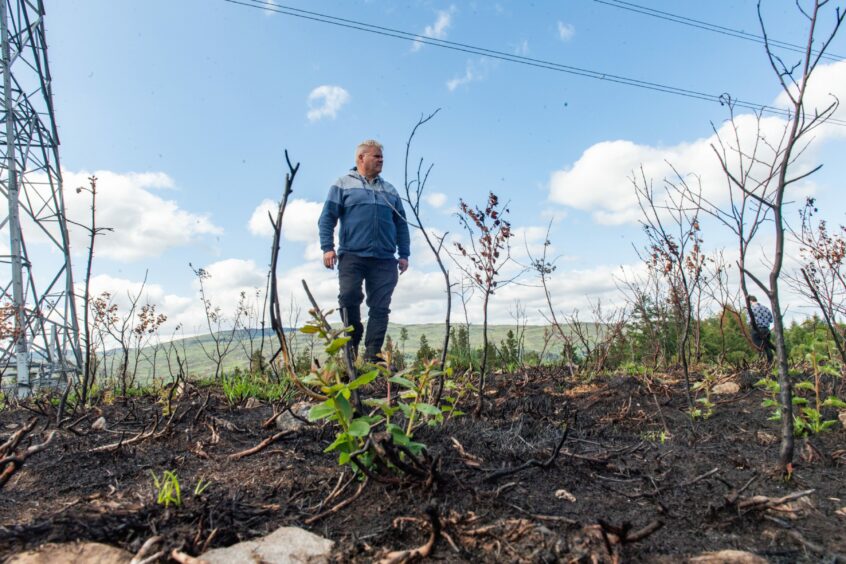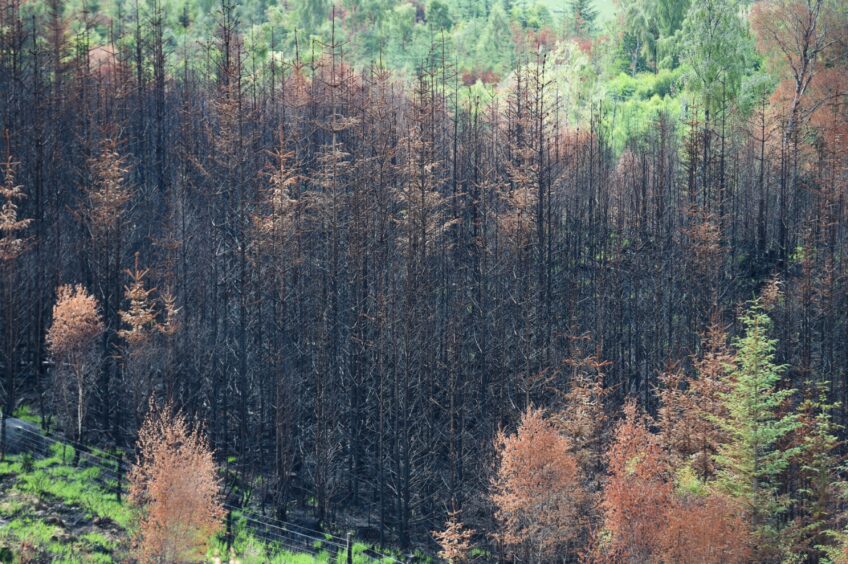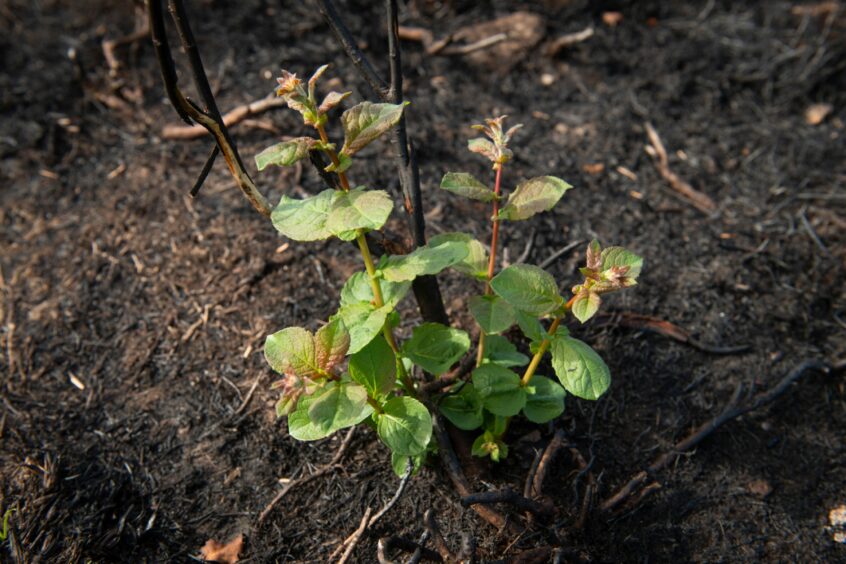Weeks after a massive wildfire ripped through the RSPB reserve at Corrimony, smoke still billows from the soil, but there are small signs of life.
The wildfire, which began on May 23, burned for more than two weeks and covered six square miles.
Emergency crews, landowners and helpers worked around the clock in blistering heat to bring the fire under control as it continued to lay waste to acres of wildlife habitat.
Within the impacted area was RSPB Scotland’s Corrimony Nature Reserve, so staff helped fight the fire, describing it as a “war” against an unforgiving enemy.
Almost a month after the fire started, the land is still burning, with more than 35 hotspots belching out smoke casting a haze throughout the woodland.
Most are in the forests managed by Forestry and Land Scotland, whose teams are still working hard to extinguish areas still smouldering.
Stepping onto the blackened landscape, the devastation is clear for miles, with the smell of smoke still heavy in the air and burning in your nostrils.
The expanse of ground where young trees and wild heather once thrived now feels hollow, and every so often a plume of ash is emitted as you step.
‘It’s the worst time to have a wildfire’
Dan Tomes, RSPB Scotland’s south Highland area manager, who was on the front line during the first few days said it was the “most ferocious” fire he had ever seen.
When he first arrived on the scene, he was shocked by how “out of control” the fire was because of the strong winds blowing it across the land.
Some areas were more affected than others like the fields of heather as the plant contains oil which can be flammable.
This, coupled with the hot, dry weather, made for a “dangerous combination”, said Mr Tomes.
He said: “We’ve lost around 2,000 acres of ground, and that’s a mix of open moorland with young woodland regenerating on it and mature woodland as well.
“Late spring and early summer is a really busy time for nature with lots of birds and animals reproducing and plants flowering, so it’s the worst time to have a wildfire as we will have lost a whole generation of breeding birds, insects and reptiles.”
Even though the ground in places continues to sizzle and smoke, just three weeks after the land was on fire, there are signs of life emerging once again.
Blackened hills are now patchy with green shrubs. However, the fire penetrated so deep into the ground that anything there before has been destroyed.
Blackened hills and smouldering forests
Before the fire, the RSPB was planting native species of trees, including the Caledonian Pine, to diversify tree populations.
Birds’ nests and any chicks in them have been destroyed, including half the habitat of rare bird species, the black grouse, with around 60 roaming the reserve.
Mr Tomes estimates more than 10,000 trees have been damaged or killed by the flames, with most still standing, albeit their roots are charred and crumbling.
Following the wildfire, RSPB Scotland launched a fundraising appeal to help with repairs and replanting at Corrimony.
Mr Tomes said: “We have several miles of fencing to replace and we will need to plant some of the rarer species of trees.
“We have plenty of mature birch trees left on the reserve and later on in
the year they’ll be casting seed onto ash-fertilised ground, so we could have a real flush of natural regeneration.
“It’s still quite a devastated landscape, there’s lots of dead wildlife but we have got a lot of grass coming back, and some of the birch trees have started to throw up new shoots, so there is hope.
“In the first six months, we would like to replace all the fencing, identify the trees we want to plant, and arrange a few local community volunteer days to allow people to come out and help restore the habitat.”
Mr Tomes says it shows “how quickly mother nature can heal itself”, and was hopeful that with hard work, the reserve could return to the way it was in 10 years.
